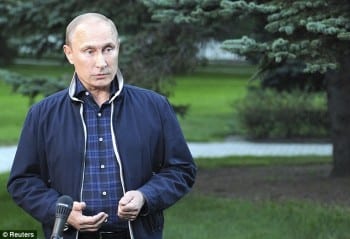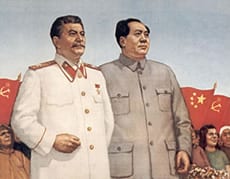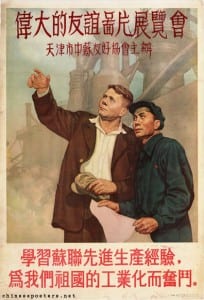457

Stephen Lendman
[I]n his book titled “The Sino-Russian Challenge to World Order,” Gilbert Rozman says both countries have much closer ties than commonly thought.
They’re deepening. United they challenge US hegemony. Leonid Bershidsky is founding editor of Russia’s leading business daily, Vedomosti.
He expects ties between both nations to strengthen and endure. Russia needs to pivot East. China needs access to its enormous resources.
According to Bershidsky, both countries “are made for each other. Despite many cultural differences, their people have more values in common than either share with the West.”
“(D)ifferent paths led (them) to the same spot…They suit each other.” Putin and Xi call each other “good friends.”
“After 25 years of exploring vastly different models of organizing society, Russians and Chinese are close enough in attitudes to join in partnership against the West.”
Michael J. Green is Center for Strategic and International Studies (CSIS) Asia and Japan Chair senior vice president.
“Is the new alignment between Russia and China a threat to the United States,” he asked? “Moscow and Beijing have not been this close in half a century.”
Xi’s “New Model of Great Power Relations” stresses “manag(ing) relations with America and “ally(ing)” with Russia.
Both countries share significant interests, Green stresses. Putin and Xi promised increased “coordination” on policy.
Together they challenge Obama’s Asia pivot. They’re a powerful counterforce.
According to Green, “(t)he new Sino-Russian alignment (might) help cure (Washington) of its myopia and force it to think globally as it acts locally.”
Artyom Lukin is Vladivostok-based Far Eastern Federal University School of Regional and International Studies deputy director.
He believes Washington’s dual containment policy binds Russia and China closer together. At the same time, it risks possible WW III.
“The current security situation in the Asia-Pacific – with competing sovereignty claims, the rise of nationalism among both major and lesser countries, and great power rivalry – increasingly resembles Europe a century ago,” he said.
China’s rising power “put(s) it on a collision course with” America. Much like Anglo/German antagonism launched WW I.
Experts believe Washington’s dual containment policy binds Russia and China closer together. At the same time, it risks possible WW III.
Allied with Moscow, Beijing has greater security and access to Russia’s vast resources. United, they “could have Central Asia (and) Mongolia to themselves, effectively shutting out all external powers from the heart of Eurasia.”
“An alliance with Moscow would also put Russia’s military-industrial complex and its vast military infrastructure in Eurasia at Beijing’s service. What might ultimately emerge is a Eurasian league, which, in controlling the continental heartland, would be reminiscent of the Central Powers alliance formed in the middle of Europe by Imperial Germany and the Habsburg empire.”
Washington and other Western nations underestimate the potential for Sino/Russian entente, Lukin believes. Both countries need each other. They face a common foe. America’s hegemonic ambitions threaten them.
Washington’s Ukraine policy draws them closer together. Lukin calls it “a tipping point, sealing the fate of Eurasian alignments.” Putin and Xi comprise a “formidable force.” They’ll be around a long time. In 2018, Putin is likely to win reelection. Xi will maintain power until 2022. Perhaps longer as “paramount leader.”
US unipolarity is waning. New order “contours” are taking shape. It remains to be seen how they develop. Will they reflect multipolarity or East/West hostile alliances? Two “grand” ones preceded WW I.
US-led NATO comprises one today. Washington’s dual containment policy forces Russia and China to form an anti-Western counterweight. They’ve done so with BRICS countries Brazil, India and South Africa, the Shanghai Cooperation Organization (SCO), some G20 countries and Non-Aligned Movement (SCO) ones.

“In return, however, we have seen various reservations and attempts to interfere in our domestic affairs.” (click to expand)
At issue is forgetting history’s lessons. Repeating its mistakes may follow. Not because of Sino/Russian policy. US hegemonic ambitions risk the unthinkable.
Putin hopes for better Moscow/Washington relations. He wants potential confrontation avoided. “(O)ur aim has always been to build open partnership relations with the United States.” he said. “In return, however, we have seen various reservations and attempts to interfere in our domestic affairs.”
“Everything that has happened since the beginning of this year is even more disturbing.”
“Washington actively supported the Maidan protests, and when its Kiev henchmen antagonized a large part of Ukraine through rabid nationalism and plunged the country into a civil war. It blamed Russia for provoking the crisis.”
“Now President Barack Obama in his speech at the UN General Assembly named ‘Russian aggression in Europe’ as one of the three major threats facing humanity today alongside with the deadly Ebola virus and the Islamic State.”
“Together with the sanctions against entire sectors of our economy, this approach can be called nothing but hostile.”
“The United States went so far as to declare the suspension of our cooperation in space exploration and nuclear energy.”
“They also suspended the activity of the Russia-US Bilateral Presidential Commission established in 2009, which comprised 21 working groups dedicated, among other things, to combating terrorism and drug trafficking.”
“At the same time, this is not the first downturn in relations between our countries.”
“We hope that our partners will realize the futility of attempts to blackmail Russia and remember what consequences discord between major nuclear powers could bring for strategic stability.”
“For our part, we are ready to develop constructive cooperation based on the principles of equality and genuine respect for each other’s interests.”
A previous article discussed strengthening Sino/Russian ties. Western policies draw both countries closer together. For security and trade.
A separate article discussed their hugely important gas deal. Worth about $400 billion over 30 years.
It’s Gazprom’s largest deal ever. No other contractual arrangement approaches it. No other bilateral one anywhere.
Russia will supply China with around 38 billion cubic million meters of natural gas annually. For the next 30 years.
Potentially it could nearly double in size. Depending on China’s future needs.
Both countries are natural partners. They pledged stronger economic and financial ties.
Wider-ranging cooperation. Increasingly trading in their own currencies.
Bypassing dollar transactions. Weakening it in the process. At the time, other key trade deals were agreed on.
In technological, industrial, and commercial sectors. In military hardware.
Growing Sino/Russian trade lessens reliance on increasingly undependable Western sources. China is Russia’s leading foreign trade partner.
A Sino/Russian Investment Committee was established. Its purpose is expanding economic and financial ties.
Diversifying trade. Reducing dependence on global economic conditions.
Promoting cooperation in technology-intensive areas. Including industrial, commercial, banking and military ones.
They’re increasing bilateral ruble/renminbi trade. It bears repeating. Doing so bypasses dollar hegemony. Weakening its reserve status strength over time.
Eventually perhaps ending it. Money printing madness defeats it. So does America’s drive for world dominance.
By yearend, China will surpass America as the world’s top economy. Based on purchasing power parity (PPP). What a representative basket of goods in one country costs v. another.
The speed of its growth is remarkable. Analysts call it one of the greatest success stories in modern times.
As recently as 2005, its economy was less than half the size of America’s.
By 2019, IMF economists expect it to be 20% larger based on PPP. Its phenomenon reflects overall emerging market growth v. developed ones.
In 2007, they accounted for around half of global output. It’s now about 57% and rising.
By the 2020s, it may approach, reach or surpass two-thirds. Since 2007, it’s ninefold what developed nations achieved.
China’s growth is polar opposite America’s. It’s gaining at the expense of its Western rival. It benefits from closer Russian ties.
On October 9, Itar Tass headlined “China plans to sign about 50 agreements with Russia.” In aviation, energy, finance, innovations and infrastructure development.
According to Chinese Foreign Minister Cheng Guoping, both countries will sign dozens of inter-governmental, inter-departmental and corporate documents on different aspects of bilateral cooperation.
From October 12 – 14, Chinese State Council Prime Minister Li Keqiang visited Moscow. His first time ever.
Promoting “stronger political trust, higher mutual support between Russia and China in the field of sovereignty and territorial integrity,” according to Cheng.
Beijing intends “build(ing) up practical cooperation with Russia in aviation and space, energy, high-speed railways, finance, innovations and projects for infrastructure development,” he added.
It’ll “develop humanitarian exchanges, particularly during the Year of Youth Exchanges between Russia and China, as well as joint preparation for celebrations on the occasion of the 70th anniversary of the Victory in World War II in 2015.”
It “intends to expand cooperation with Russia on international issues.” During Li’s visit, energy cooperation will be stressed.
According to Cheng, “(g)as cooperation is an important aspect of Russian-Chinese energy cooperation.”
Beijing and Moscow “are working closely on creating” an alternative route for Russian gas to China.
On September 1, Putin and Chinese Vice Premier Zhang Gaoli launched construction of Gazprom’s Power of Siberia (PoS) pipeline.
It’s hugely important. When completed, it’ll deliver around four trillion cubic meters of gas to China over the next 30 years.
Perhaps double that amount depending on Beijing’s future needs. According to Putin:
“The new gas branch will significantly strengthen the economic cooperation with countries in the Asia-Pacific region and above all – our key partner China.”
PoS will extend 3,968 km when completed. It’ll link eastern Siberian gas fields to China. It’ll be the world’s longest fuel transmission network.
It’s one of the world’s largest construction projects. It’s estimated to cost over $70 billion. It’s a vital investment for both countries.
In his opening remarks, Putin said it’ll “increase energy security and ensure Russia’s ability to fulfill (its) export obligations.”
It’s expected to begin operating in 2019. Siberian gas will supply China’s Northeast and Russia’s Far East. In 2015, China will begin construction on its end.
“Once we create a gas pipeline network here in the Far East and Siberia, we will be able to connect the European pipeline system to the East,” said Putin.
“And this, in terms of export opportunities and expanding Russia’s ‘gasification,’ is very beneficial.”
“Depending on the situation in world markets, we can more effectively implement gas flows – either more to the West or to the East.”
“We generally take a very careful approach to the approval of our foreign partners, but of course, for our Chinese friends there are no restrictions.”
Their relationship is hugely important for both nations. It promises to strengthen over time.
Stephen Lendman lives in Chicago. He can be reached at lendmanstephen@sbcglobal.net.
His new book as editor and contributor is titled “Flashpoint in Ukraine: US Drive for Hegemony Risks WW III.”
http://www.claritypress.com/LendmanIII.html
Visit his blog site at sjlendman.blogspot.com.
Listen to cutting-edge discussions with distinguished guests on the Progressive Radio News Hour on the Progressive Radio Network.
It airs three times weekly: live on Sundays at 1PM Central time plus two prerecorded archived programs.
NOTICE: YOUR SUBSCRIPTIONS (SIGNUPS TO OUR PERIODICAL BULLETIN) ARE COMPLETELY FREE, ALWAYS. AND WE DO NOT SELL OR RENT OUR EMAIL ADDRESS DATABASES.




